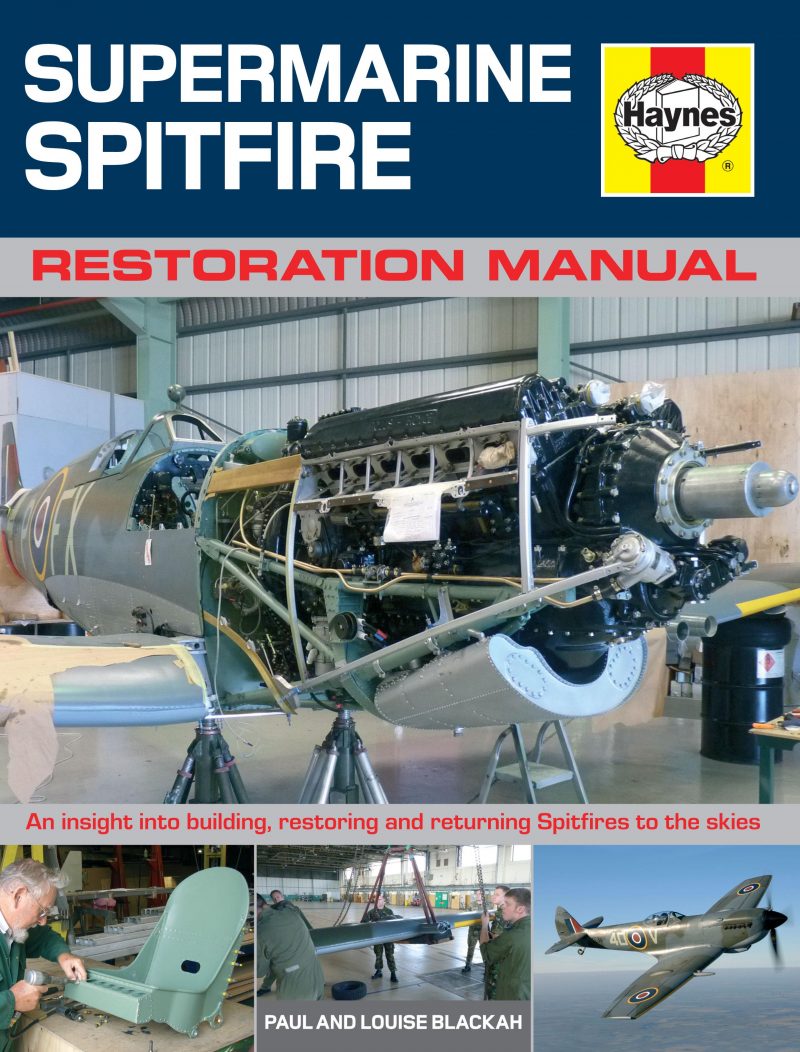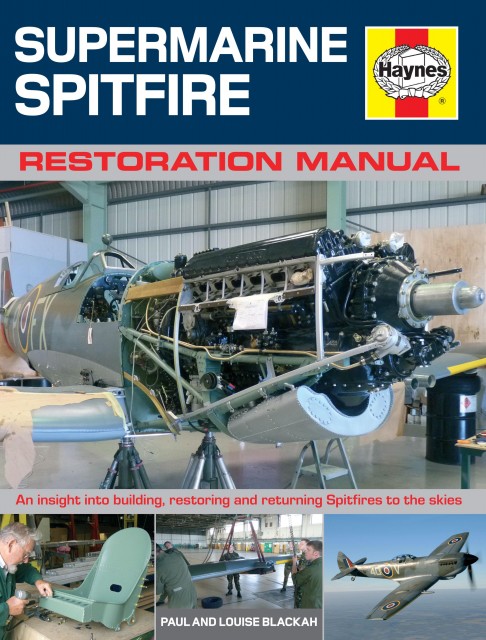Trying to write any general piece about the Spitfire without using terms like “iconic” is not easy. So there, I’ve done it and now we can move on.
Here we have Haynes flexing their muscles with another book about the aeroplane. Some years after their superb Owners Manual, experienced authors Paul and Louise Blackah have progressed to telling us how to restore one. Now, the last time I checked, I am pretty sure the only classic I own is a MUTT jeep; but given you either play for Manchester City, have won the lottery or have been fracking in your back garden then you might have the available readies to splash out on an old warbird. How the hell do you go about putting her back in the air? The Blackahs tell you what to do.
It would easy to suggest this book is just an enjoyable bit of fluff, but it is far more intelligent than that, and while it would obviously appeal to serious aficionados of the Spitfire; it works on many more levels besides. I’ve previously bored you with the fact I am a librarian, so it doesn’t take much of a leap to agree with me that the chapter including Timothy Burrows’ research on aircraft histories is particularly interesting.
The authors have had support from many contributors to make this a really fine piece of work. I am a big lover of aircraft manufacturing images and the archive photography here is top class. The jigs and methods are all explained. In actual fact there is a vast amount of history about Spitfire production here. It covers all the major factories and the satellite industries that helped win the war. You have to like this sort of stuff.
I don’t have a mechanical bone in my body. I am a dunce with a tool kit, but seeing aircraft being stripped, rebuilt and painted in true detail is fascinating. I think it is the vicarious glow I get from seeing the immense skill of others putting something so beautiful together that makes the thing work so well.
Ultimately this book is a tad niche. But there is a lot here to appeal to the general reader. If you’ve actually bought a derelict Spitfire I would expect you had done more research yourself before finding your way to this book; but I hope it gets on the shelves of budding restorers. It is technical, but it is always entertaining. It is not merely a companion to the original manual, it takes us way beyond it and the quality of what you get for your twenty five pounds is immense.
I will never own a Vickers Supermarine Spitfire, in fact I won’t even ever own a Triumph Spitfire, unless it is diecast; but the quality of this book makes me appreciate even more the work of the people who keep the old girls flying. I was doing some work at Duxford once and I placed my fingers on the wing of a Spitfire being prepared for flight. A disgruntled man in overalls proceeded to tell me I might have damaged a million quid’s worth of aeroplane by doing this. I thought he behaved like a tosser, but, in fairness, the Spitfire is now so rare and was always very special; I can see why he was so protective. Now, where did I put that lottery ticket?
Review by Mark Barnes for War History Online
SUPERMARINE SPITFIRE RESTORATION MANUAL
An Insight into Building, Restoring and Returning Spitfires to the Skies
By Paul and Louise Blackah
Haynes Publishing
ISBN: 978 0 85733 224 0

